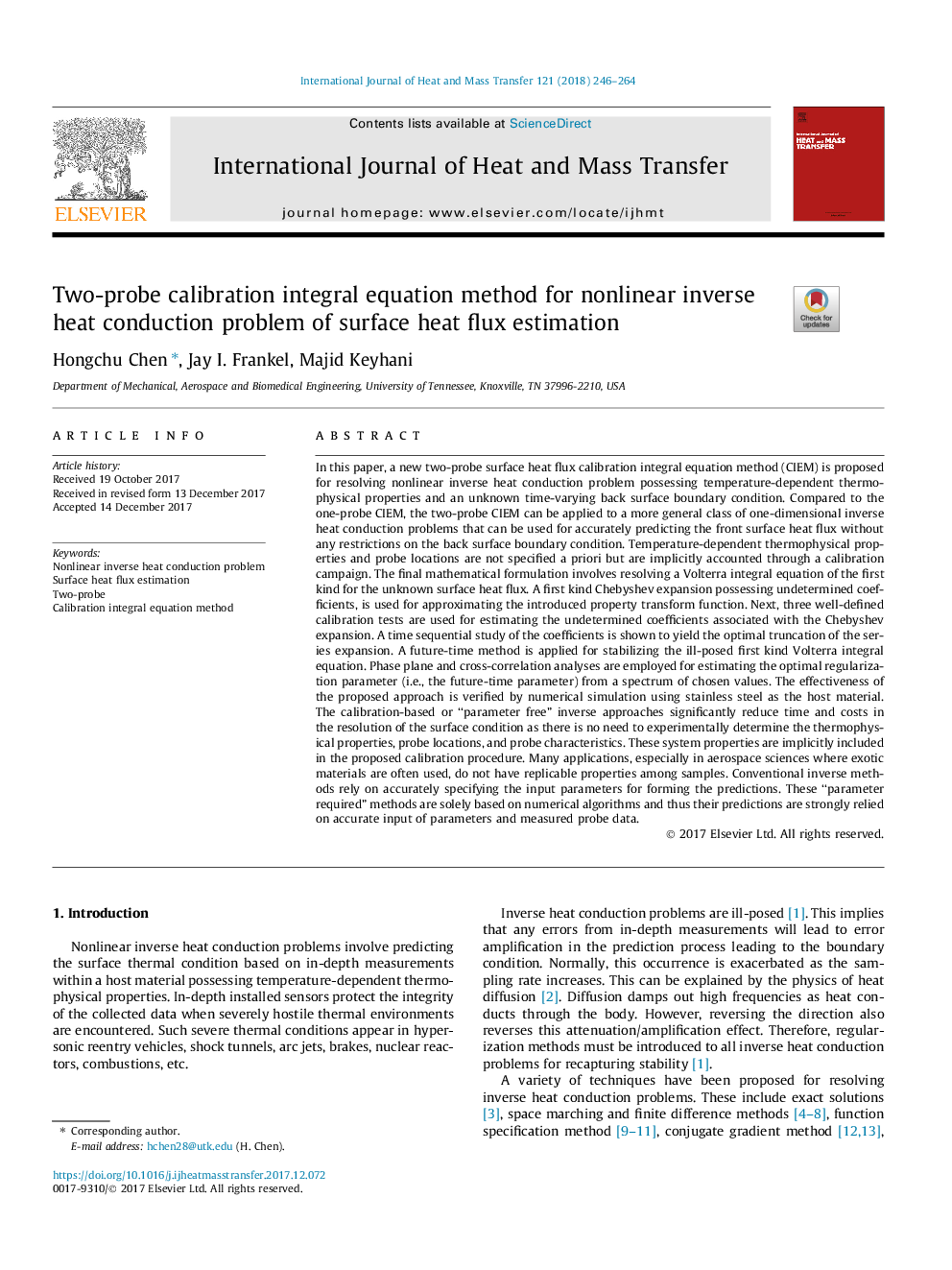| کد مقاله | کد نشریه | سال انتشار | مقاله انگلیسی | نسخه تمام متن |
|---|---|---|---|---|
| 7054455 | 1458019 | 2018 | 19 صفحه PDF | دانلود رایگان |
عنوان انگلیسی مقاله ISI
Two-probe calibration integral equation method for nonlinear inverse heat conduction problem of surface heat flux estimation
ترجمه فارسی عنوان
روش معادلات انتگرال دو کالایابری برای مسئله هدایت غیر مستقیم گرادیان معکوس حرارت شار حرارتی سطح
دانلود مقاله + سفارش ترجمه
دانلود مقاله ISI انگلیسی
رایگان برای ایرانیان
کلمات کلیدی
مشکل انتقال غیر مستقیم گرما معکوس، برآورد شار حرارتی سطح، دو پروب، روش معادلات انتگرالی کالیبراسیون،
موضوعات مرتبط
مهندسی و علوم پایه
مهندسی شیمی
جریان سیال و فرایندهای انتقال
چکیده انگلیسی
In this paper, a new two-probe surface heat flux calibration integral equation method (CIEM) is proposed for resolving nonlinear inverse heat conduction problem possessing temperature-dependent thermophysical properties and an unknown time-varying back surface boundary condition. Compared to the one-probe CIEM, the two-probe CIEM can be applied to a more general class of one-dimensional inverse heat conduction problems that can be used for accurately predicting the front surface heat flux without any restrictions on the back surface boundary condition. Temperature-dependent thermophysical properties and probe locations are not specified a priori but are implicitly accounted through a calibration campaign. The final mathematical formulation involves resolving a Volterra integral equation of the first kind for the unknown surface heat flux. A first kind Chebyshev expansion possessing undetermined coefficients, is used for approximating the introduced property transform function. Next, three well-defined calibration tests are used for estimating the undetermined coefficients associated with the Chebyshev expansion. A time sequential study of the coefficients is shown to yield the optimal truncation of the series expansion. A future-time method is applied for stabilizing the ill-posed first kind Volterra integral equation. Phase plane and cross-correlation analyses are employed for estimating the optimal regularization parameter (i.e., the future-time parameter) from a spectrum of chosen values. The effectiveness of the proposed approach is verified by numerical simulation using stainless steel as the host material. The calibration-based or “parameter free” inverse approaches significantly reduce time and costs in the resolution of the surface condition as there is no need to experimentally determine the thermophysical properties, probe locations, and probe characteristics. These system properties are implicitly included in the proposed calibration procedure. Many applications, especially in aerospace sciences where exotic materials are often used, do not have replicable properties among samples. Conventional inverse methods rely on accurately specifying the input parameters for forming the predictions. These “parameter required” methods are solely based on numerical algorithms and thus their predictions are strongly relied on accurate input of parameters and measured probe data.
ناشر
Database: Elsevier - ScienceDirect (ساینس دایرکت)
Journal: International Journal of Heat and Mass Transfer - Volume 121, June 2018, Pages 246-264
Journal: International Journal of Heat and Mass Transfer - Volume 121, June 2018, Pages 246-264
نویسندگان
Hongchu Chen, Jay I. Frankel, Majid Keyhani,
